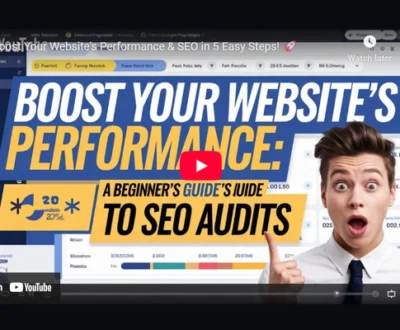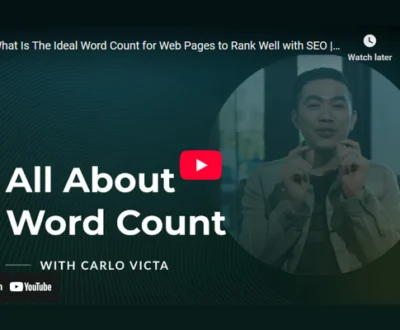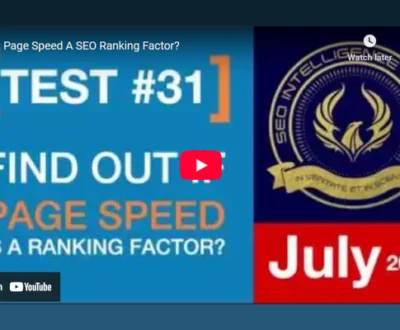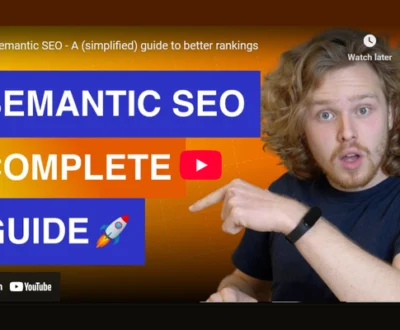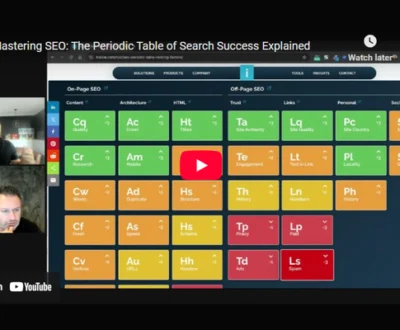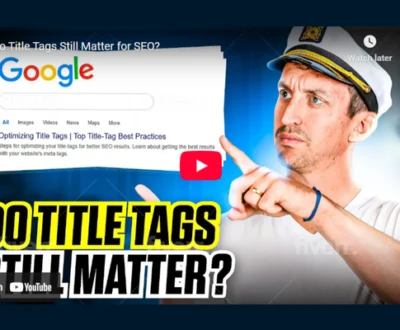I believe a blog post is truly optimized for SEO when it starts with thorough keyword research, targeting terms that match what people search for. Then, it aligns the content closely with the user’s intent, whether informational or transactional. Clear structure with headings improves readability, while proper keyword placement avoids overuse. Technical factors, like fast loading and internal links, enhance performance. Crafting effective meta tags also boosts visibility. Keeping content updated guarantees ongoing relevance, and more insights follow for those interested in mastering SEO.
- Key Takeaways
- Conducting Effective Keyword Research
- Aligning Content With User Search Intent
- Structuring Content for Readability and SEO
- Optimizing Keyword Usage and Distribution
- Enhancing Technical SEO Elements
- Crafting Meta and Alt Tags for Better Visibility
- Incorporating Internal Links and Rich Media
- Monitoring Performance and Updating Content
- Frequently Asked Questions
- Final Thoughts
Key Takeaways
- Conduct thorough keyword research and strategically place primary and semantic keywords to enhance relevance and search visibility.
- Align content with user search intent by understanding and addressing informational, transactional, or navigational needs.
- Structure content with clear headings, short paragraphs, and lists to improve readability and user engagement.
- Optimize technical SEO elements including site speed, mobile-friendliness, and internal linking for better crawlability and user experience.
- Regularly monitor keyword rankings and update outdated information to maintain content relevance and authority.
Conducting Effective Keyword Research
Although keyword research can seem challenging at first, it forms the foundation of any successful SEO strategy.
I start by using keyword research tools like Google Keyword Planner and Ahrefs to gather data on search volume analysis and keyword difficulty metrics. This helps me identify which keywords could bring valuable traffic without being too competitive.
Next, I study competitor keyword strategies to uncover content gaps and spot opportunities they may have missed. I also perform keyword relevance assessment to guarantee the terms align closely with my topic.
Seasonal keyword trends catch my attention too, as timing can affect search interest. I find long tail keyword benefits particularly useful since they target specific user needs and face less competition.
Applying keyword clustering techniques organizes related terms, making content more cohesive and easier to optimize. This process also contributes to increasing online visibility.
Throughout, I consider user intent analysis to better understand what searchers aim to find, guaranteeing my research focuses on meaningful and actionable keywords.
Aligning Content With User Search Intent
When I create content, I pay close attention to aligning it with user search intent because understanding what users truly want guides the entire process. This alignment guarantees content relevance, boosting user engagement and building trust. Ignoring user intent risks missing the mark, reducing both traffic and credibility. Staying updated on search trends helps me adapt content to evolving user needs, maintaining its usefulness and authority over time.
| User Intent Type | Content Format Example |
|---|---|
| Informational | Blog posts, guides |
| Transactional | Product pages |
| Navigational | Brand or homepage links |
| Mixed Intent | Tutorials, videos |
| Social Engagement | Social media posts |
Structuring Content for Readability and SEO
Aligning content with user search intent sets the foundation, but organizing that content effectively determines how well readers engage with it.
To boost content readability and user engagement, I focus on structuring posts clearly and logically. This means breaking text into manageable sections, using concise paragraphs, and highlighting key points with lists.
Here are some essentials I always apply:
- Use clear headings and subheadings to guide readers through the content and improve scanning.
- Keep paragraphs short—around 3-4 sentences—to reduce reader fatigue and enhance comprehension.
- Incorporate bullet points or numbered lists to make complex information easier to digest.
Optimizing Keyword Usage and Distribution
When optimizing keyword usage, placing your primary keywords strategically—in titles, headings, and early in the content—boosts SEO impact.
Integrating semantic keywords helps search engines grasp your content’s context while keeping the text natural.
It’s important to maintain a smooth keyword flow that supports readability and avoids sounding forced or repetitive.
Primary Keyword Placement
Effective primary keyword placement starts with understanding its impact on both search engines and readers. Proper keyword placement strategies guarantee your blog post ranks well and remains readable.
I focus on integrating the primary keyword naturally and strategically, avoiding keyword stuffing while maintaining keyword density optimization between 1-3%. Key areas for placement include:
- Near the start of the title tag, within a 60-character limit for full visibility
- In the single H1 tag to boost search relevance and align with content
- Within the introduction and final paragraph to reinforce topical focus
This distribution helps search engines grasp the post’s theme quickly, while keeping the content engaging for readers.
Semantic Keyword Integration
Since search engines have become more sophisticated, incorporating semantic keywords into your blog post is essential for enhancing content relevance and search visibility.
I focus on semantic relevance by using keyword clustering, grouping related terms by topic and intent to create a structured content approach. This method helps clarify the context of my writing and lets search engines better understand the overall theme.
Instead of repeating the same keywords, I naturally weave in related phrases and concepts, which prevents keyword stuffing and improves user experience.
By distributing these semantic keywords across headings, paragraphs, and metadata, I strengthen the content’s topical coverage, making it more likely to rank for a variety of relevant searches.
This strategy guarantees my blog post aligns with modern SEO best practices and search engine algorithms.
Natural Keyword Flow
Although optimizing keyword usage is essential for SEO, maintaining a natural keyword flow affirms your content remains engaging and readable.
Using keyword variations helps avoid repetition and enhances contextual relevance, making your writing feel more organic. I focus on distributing keywords evenly across different sections, such as headings, paragraphs, and lists, to prevent clustering. This approach supports search engines in understanding the topic while keeping readers interested.
Here are key strategies I use for natural keyword flow:
- Incorporate synonyms and long-tail variations to broaden appeal
- Place keywords thoughtfully within subheadings and bullet points
- Prioritize fluid sentence structure over exact keyword repetition
Balancing keyword density with readability affirms your content performs well without sacrificing user experience.
Enhancing Technical SEO Elements
When you focus on enhancing technical SEO elements, you improve not only your site’s visibility but also the overall user experience. Conducting regular technical audits helps identify issues like slow server response or broken links. Mobile optimization is essential since over half of searches are on mobile devices; responsive design and AMP pages boost load speed. I use tools like Google PageSpeed Insights to monitor performance and fix problems promptly.
Here’s a quick overview of key technical SEO components:
| Element | Purpose | Tools/Methods |
|---|---|---|
| Site Speed | Faster loading, better rank | PageSpeed Insights, CDNs |
| Mobile Optimization | Smooth mobile user experience | Responsive design, AMP |
| Website Architecture | Easy navigation and crawlability | XML sitemap, canonical tags |
Crafting Meta and Alt Tags for Better Visibility
Crafting effective meta and alt tags plays an essential role in improving your website’s visibility and search engine ranking. A well-written meta description accurately summarizes the page content, naturally includes relevant keywords, and remains concise to encourage clicks.
Similarly, alt text should clearly describe images, enhancing accessibility and helping search engines understand your visuals.
When optimizing these tags, keep in mind:
- Each meta description must be unique to prevent duplication issues and improve indexing.
- Alt text should avoid keyword stuffing, instead offering clear, concise descriptions that support image SEO.
- Both tags contribute to user experience, making content more accessible and relevant.
Incorporating Internal Links and Rich Media
Incorporating internal links and rich media into your blog posts greatly boosts both user experience and search engine optimization. Internal linking helps visitors navigate your site more easily, guiding them to related content and keeping them engaged longer. This not only improves engagement metrics like bounce rate and time on site but also helps search engines crawl and index your pages more efficiently.
By distributing link equity through internal links, you enhance the SEO value of less prominent pages, supporting your overall keyword strategy.
Rich media, such as images, videos, and infographics, adds visual interest and can increase page views by capturing attention more effectively than text alone. When optimized with descriptive alt tags and proper file names, rich media also improves search engine discoverability.
It’s important to make sure rich media doesn’t slow down your page load times and works well on mobile devices. Using internal linking alongside rich media creates a more thorough, user-friendly blog post that supports SEO goals effectively.
Monitoring Performance and Updating Content
I regularly track keyword rankings to see how my content performs in search results and analyze traffic patterns to understand where visitors come from and what they engage with.
When I notice outdated information or shifts in user interest, I update the content to keep it relevant and useful.
This ongoing process helps maintain my blog’s visibility and guarantees it meets readers’ needs effectively.
Track Keyword Rankings
Tracking keyword rankings is essential for understanding how your website performs in search engine results pages (SERPs) for specific terms. I rely on keyword tracking to measure the effectiveness of my SEO efforts and make informed decisions.
Using ranking tools like Semrush or Ahrefs, I monitor my site’s position across various locations and devices. This helps me identify trends and spot any sudden drops early.
To set up effective keyword tracking, I focus on three key steps:
- Select relevant keywords that align with my content goals.
- Schedule automated reports for consistent ranking updates.
- Compare rankings against competitors to uncover opportunities.
Analyze Traffic Patterns
Monitoring how visitors interact with your website reveals valuable information about your content’s performance beyond just keyword rankings.
Through traffic analysis, I track where visitors come from—organic search, social media, or referrals—and examine user behavior metrics like bounce rates, session duration, and pages per session. These insights show how engaging and relevant my content is.
For example, a high bounce rate signals that visitors may not find what they expect, prompting a closer look at that post. Segmenting traffic and analyzing patterns helps me identify which content resonates and which doesn’t.
This understanding allows me to focus efforts on improving user experience and targeting content more effectively, making traffic analysis an essential step in optimizing a blog post for SEO.
Update Outdated Information
Because the digital landscape evolves rapidly, updating outdated information on your blog is essential to maintain its relevance and authority.
I perform regular content audits to monitor performance and spot content that needs revitalizing. This practice improves user engagement by keeping readers informed with current data and trends.
When updating posts, I focus on:
- Checking for outdated statistics, broken links, and obsolete references.
- Revitalizing titles and meta tags to reflect new information and improve SEO.
- Incorporating recent research and industry changes to maintain credibility.
Frequently Asked Questions
How Does SEO Optimization Differ for Multilingual Blogs?
When optimizing multilingual blogs, I focus on language targeting to reach specific audiences and use keyword localization to match cultural nuances. This guarantees content resonates locally while improving search rankings across different regions effectively.
What Role Do Social Media Signals Play in SEO?
I believe social media influence plays a key role in SEO by boosting engagement metrics like shares and comments. These signals indirectly improve search visibility, drive traffic, and help search engines recognize your content’s value.
Can User Engagement Metrics Directly Impact SEO Rankings?
I believe user behavior plays an essential role in SEO rankings. By implementing smart engagement strategies, you can boost metrics like dwell time and bounce rate, signaling search engines that your content truly satisfies visitors’ needs.
How Important Is Voice Search Optimization for Blog Posts?
I believe voice search optimization is essential since conversational queries dominate now. Ensuring mobile optimization and targeting local search helps your blog connect with users naturally and boosts visibility where it really counts.
What Are Common SEO Pitfalls to Avoid in Blog Comments?
I always find comment moderation and spam detection essential because coincidentally, avoiding keyword stuffing and irrelevant links in comments not only prevents penalties but also keeps discussions genuine, boosting SEO without the risk of harming your site’s reputation.
Final Thoughts
Think of optimizing a blog post like tending a garden: keyword research is the soil preparation, aligning content with user intent is planting the right seeds, and structuring content guarantees healthy growth. Technical SEO and meta tags act as sunlight and water, nurturing visibility, while internal links and rich media are the supportive trellises. Regularly monitoring and updating your post keeps the garden thriving, making certain your content remains relevant and easily found by those searching for it.
Windee Tan is a seasoned SEO Specialist with over a decade of experience helping businesses grow their organic visibility through data-driven strategies. He specializes in technical SEO, content optimization, and local search, with deep knowledge of tools like GA4, GSC, SEMrush, and Screaming Frog. Windee is passionate about translating complex SEO insights into practical tactics that drive real-world results. When he's not auditing sites or crafting keyword strategies, he’s exploring the latest trends in AI, digital marketing, and productivity.
About this blog
We are a digital marketing company with a focus on helping our customers achieve great results across several key areas.
Request a free quote
We offer professional SEO services that help websites increase their organic search score drastically in order to compete for the highest rankings even when it comes to highly competitive keywords.
Subscribe to our newsletter!
More from our blog
See all postsRecent Posts
- Writing Clear Calls to Action That Boost On-Page SEO 21 August 2025
- Why Word Count Still Matters in On-Page SEO Today 20 August 2025
- Why Site Speed Is Critical for On-Page SEO Success 19 August 2025


